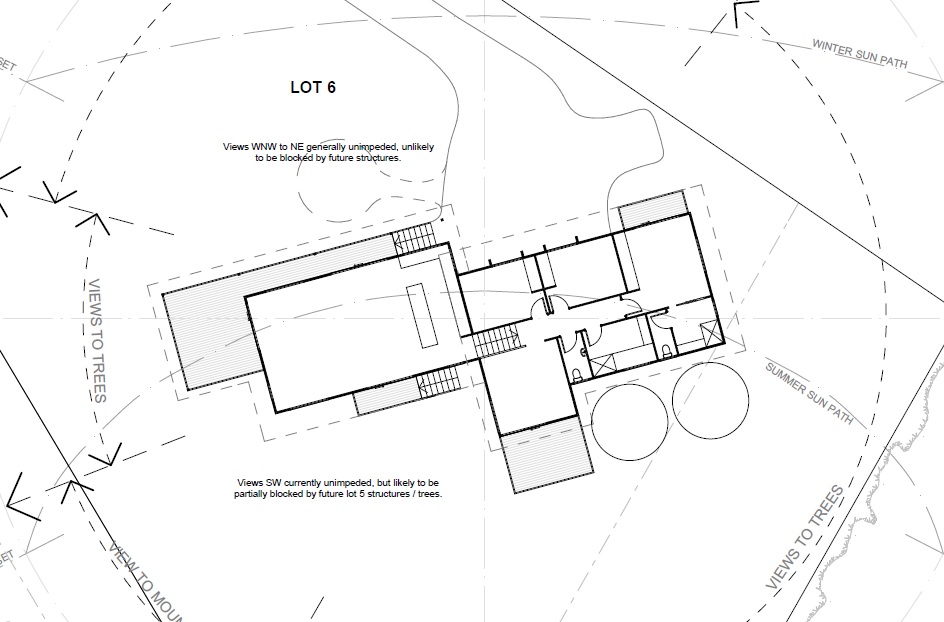Both the old Court House and Police Station in Bellingen (just to the south of Coffs Harbour) were built in 1910 using these unusual concrete bricks made with sand from the nearby Bellinger River. Clay bricks and stone were a little hard to come by in the area back then, so this was the innovative solution. Concrete is often such a homogenous, drab and uninspiring material, but in this instance it has a wonderful natural colour and texture with a character unique to its location through the use of very locally sourced sand. (Not suggesting sand mining should begin in the Bellinger again of course...)
|
In most Australian climates, particularly in warm temperate and subtropical areas such as Coffs Harbour, it is relatively easy to reduce or even eliminate energy consumption for heating and cooling a house. This is easier to achieve in a new house, as a lot of the most important aspects of passive solar design relate to initial design issues.
Possibly the most important thing to consider is building orientation. Generally, you want the house to be rectangular with the long sides facing north and south, and the short sides facing west and east. Doing this will facilitate controlling solar gains to the house, allowing sunlight to enter in winter and be kept out in summer. If you're looking at buying a vacant property for a new house design, look for sites that will allow for a house to be built on an east-west axis. The same goes if you are looking at buying an existing house: look for rectangular houses that have their long sides facing north. Note that it is still possible to design highly efficient houses on sites with less optimal orientation. This requires more innovative design approaches, which can result in more interesting design outcomes. If you're looking for professional advice on selecting a new property or a new house, please feel free to contact me. I attended the Australian Institute of Architects Archimeet conference in Port Macquarie recently, where one of the speakers was Sydney artist Jennifer Turpin, whose practice Turpin + Crawford produces public artworks described as 'collaborations with nature'. Some of their works include Halo at Central Park in Sydney and Tied to Tide in Pyrmont: incredibly complex and creative projects requiring high levels of multi-disciplinary collaboration similar to the architectural process on an experimental building design. The way in which the works move with the elements, be it the wind or the tide or waves from passing boats, is subtle and full of beauty. Made me think of Coffs Harbour being a place with such close proximity to nature and its potential for such public art, and how this could help to foster a nuanced and respectful sense of place linked to our beautiful surroundings.
There's some interesting laneway activation going on in Coffs Harbour at the moment. Park Avenue Lane is now home to cafe Salute Espresso and a new burger restaurant, showing how unexpected and neglected urban spaces can be brought to life. This kind of development really helps to make Coffs a more vibrant, diverse and surprising place. Would be great to see a detailed study of how further development could be encouraged for this and other laneways around town...
|





 RSS Feed
RSS Feed
